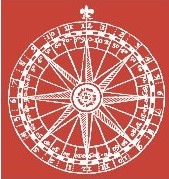“Il ridervi de la goffezza del dire”: Niccolò Franco et la satire napolitaine du pétrarquisme
This essay explores the Neapolitan background of Niccolò Franco and argues that although the main purpose of his Il Petrarchista (Venice, 1539) was certainly a kind of Erasmian and Aretinian satire of the Petrarchist mode which grounded Pietro…
Listed in Article | publication by group Iter Community
Version 1.0 - published on 30 Oct 2025
Licensed under Creative Commons BY-NC 4.0
Description
This essay explores the Neapolitan background of Niccolò Franco and argues that although the main purpose of his Il Petrarchista (Venice, 1539) was certainly a kind of Erasmian and Aretinian satire of the Petrarchist mode which grounded Pietro Bembo’s Prose della volgar lingua (1525), still not enough critical attention has been given to the Neapolitan background of Franco’s education (until 1536), which is essential to an understanding of Il Petrarchista. Indeed, not only did Franco praise the Neapolitan heirs of Pontano’s and Sannazaro’s Academy (Epicuro, Rota and Tansillo), contrasting them with the Venetian imitation of Bembo’s canon, but he himself was also imbued with that Neapolitan humanism which had used poetical satire to shape the intellectual space in sixteenth-century Italy. This paper recalls some passages of Fabrizio Luna’s Vocabulario (1536) and, especially, of Benedetto Di Falco’s Rimario (1535), in order to compare them with Franco’s literary positions—whose conception of imitatio derived also from Erasmus’. In conclusion, this paper suggests that the satirical scheme of Di Falco’s Rimario formulated in nuce a cultural stance that Niccolò Franco would later reinforce in his Il Petrarchista. L’article explore le contexte napolitain de l’oeuvre de Niccolò Franco et montre que la formation que Franco reçut à Naples, jusqu’en 1536, est essentielle à la compréhension de son ouvrage, même s’il ne fait aucun doute qu’ Il Petrarchista (Venise, 1539) fait, dans la lignée d‘Érasme et de l’Arétin, la satire de la mode pétrarquiste lancée par les Prose della volgar lingua (1525) de Pietro Bembo. En effet, Franco ne fait pas seulement l’éloge des héritiers napolitains de l’académie de Pontano et de Sannazar (Epicuro, Rota et Tansillo), en les opposant au canon vénitien de l’imitation de Bembo. Lui-même est imprégné de la leçon de l’humanisme napolitain, qui a eu recours à la satire poétique pour défendre sa place dans le champ intellectuel de l’Italie du Cinquecento. L’article rappelle quelques passages du Vocabulario (1536) de Fabrizio Luna et, surtout, du Rimario (1535) de Benedetto Di Falco, pour les comparer aux positions littéraires de Franco — dont la théorie de l’imitatio a été par ailleurs influencée par Érasme. Finalement, on propose que le schéma satirique formulé par Di Falco dans le Rimario contient in nuce une position que Niccolò Franco développa et renforça ensuite dans Il Petrarchista.
Cite this work
Researchers should cite this work as follows:
Tags
Notes
Original publication: Béhar, Roland. "“Il ridervi de la goffezza del dire”: Niccolò Franco et la satire napolitaine du pétrarquisme." Renaissance and Reformation 40 (1): 2017. 187-210. DOI: 10.33137/rr.v40i1.28453. This material has been re-published in an unmodified form on the Canadian HSS Commons with the permission of Iter Canada / Renaissance and Reformation. Copyright © the author(s). Their work is distributed by Renaissance and Reformation under a Creative Commons Attribution-NonCommercial 4.0 International License. For details, see https://creativecommons.org/licenses/.
Publication preview
Iter Community
This publication belongs to the Iter Community group.
When watching a publication, you will be notified when a new version is released.
